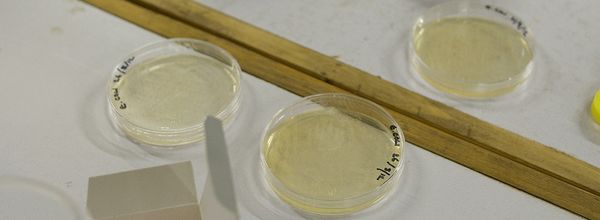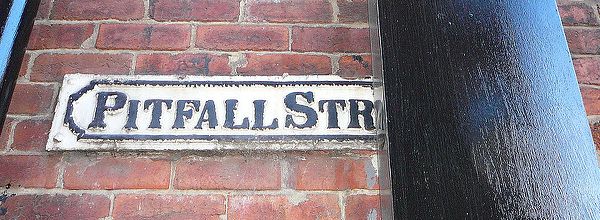Studying DNA–protein interactions is an important aspect of molecular biology. Researches use a variety of methods to study these like the chromatin immunoprecipitation (ChIP) assay, electrophoretic mobility shift assay (EMSA), DNA pull down assay, luciferase reporter assay, filter binding assay, yeast one hybrid system, etc. Another interesting assay that helps investigate DNA–protein interactions is the DNA footprinting assay. First established by Galas and Schmitz in 1978, it is one of the earlier techniques used to study these interactions and is a modification of the Maxam-Gilbert sequencing technique.1
The basis of this technique is that DNA bound proteins protect DNA from external agents that are known to cleave or modify DNA. Briefly, a protein under investigation is added to pieces of DNA containing putative protein-binding sites. The DNA is treated with a cleaving or modifying agent and the products are run on a polyacrylamide gel. When compared to a control DNA without added protein, the pattern of the test DNA would show gaps or ‘footprints’ where the protein of interest has bound to the DNA. This region can then be analyzed and determined as a potential protein binding site.
Let’s Start the DNA Footprinting Assay
- PCR amplify and label the region of interest, which is a predicted protein-binding site.
- Add the protein under investigation to the labelled amplified DNA. Make a control tube with just DNA and no protein.
- Immunoprecipitate the protein bound DNA.
- Add a modifying or cleavage agent.
- Run both samples by polyacrylamide gel electrophoresis (PAGE).
- The control sample will form a uniform ladder, whereas the test will show gaps in the pattern where the protein protects the DNA (if it binds).
- Do a comparative analysis to determine the exact sequence where the protein is bound.
What Do You Need for the Assay?2
The DNA
- Use a 100 to 400 bp region for the assay.
- Either PCR amplify DNA from a plasmid or genomic DNA source or digest the DNA fragment from a plasmid directly.
Labelling Your DNA
- End-label the DNA to identify fragments for analysis. Traditionally, 32P end-labelling is carried out and gels visualised by autoradiography. Radioactive labelling is very sensitive and optimal for small quantities of DNA but the hazards of working with radioactivity have led to alternative techniques being used. Fluorescent tagging is safer but is not sensitive enough for low DNA concentrations.3
- If the DNA is amplified via PCR, use a labelled primer directly in the PCR reaction for end-labelling.
- If the DNA is digested out of a cloned plasmid, enzymatically add the label to the DNA by making overhangs and using a polymerase to fill them in with a labelled nucleotide.
- Purify the labelled DNA to remove unlabelled probes using columns or ethanol precipitation.
The Protein
- Use purified protein instead of crude lysates.
- Allow DNA – protein binding in an appropriate binding buffer and under optimized conditions.
- Immunoprecipitate the complex using a specific antibody against the protein and protein A/G beads to separate the DNA – protein complex from unbound molecules.
Choosing a Cleavage or Modifying Agent
- A good agent should not be sequence specific (cuts or modifies at random sites on DNA), should be easy to use and control.
- DNase I has been a conventional choice as it is a double stranded endonuclease1. Its large size leads to easy physical hindrance, and it is easy to control by adding EDTA. On the other hand, it does not cut randomly as its activity is affected by local DNA structure, thus giving an uneven ladder. Also, because DNase I is a large molecule, it cannot bind adjacent to a DNA-bound protein because of steric hindrance.
- Hydroxyl radicals, created from a Fenton reaction (where Fe2+ is reduced with H2O2) are used to cause DNA breaks. They are sequence neutral and their small size provides higher resolution. But the slow digestion reaction makes the process time-consuming.
- Dimethyl sulphate (DMS) methylates purines on DNA strand. Methylate DNA prior to adding protein. Protein binding is prevented at methylated sites. After treatment and removal of protein of interest, treat with piperidine or NaOH which cuts strand at modified bases.
- UV radiation is used to cause DNA breakage. UV reacts quickly hence helps to catch momentary protein binding and can be used in vivo as it penetrates cell membranes easily. But gels from such assays are difficult to interpret.
The Reaction
- Optimize modification conditions and reagent concentrations with the source DNA prior to the footprinting assay.
- Adjust reaction conditions to get one cut or modification per DNA molecule. Before beginning the assay, test a range of concentrations of both the modifying agent and DNA ratios as well as time of reaction with a control DNA sample to determine optimal conditions.
PAGE
- Use a denaturing polyacrylamide gel to separate the cleaved fragments.
- Load equal protein quantities in each well to compare.
- After the gel run is complete, expose the gel to obtain an autoradiograph or fluorograph.
- Identify the bands absent in the test sample by comparing to the control.
- Automated analysis softwares that help interpret footprinting gels are available.
Though, the DNA footprinting assay may seem ancient and complex and is surpassed by newer alternatives and modifications like ChIP-seq, X-ray crystallography, yeast hybrid systems and in silico prediction and modelling softwares, it still remains an elegant method to study DNA-protein interactions.
References:
- Galas DJ, Schmitz A. (1978) DNAse footprinting: a simple method for the detection of protein-DNA binding specificity. Nucleic Acids Res. 5:3157–70
- Ricci MS, El-Deiry WS. (2003) DNA Footprinting. Methods in Molecular Biology. 223:117–27.
- Zianni M, Tessanne K, Merighi M, Laguna R, Tabita FR. (2003) Identification of the DNA Bases of a DNase I Footprint by the Use of Dye Primer Sequencing on an Automated Capillary DNA Analysis Instrument. J Biomol Tech. 17(2):103–13.
- Tullius TD. (1988) DNA footprinting with hydroxyl radical. Nature. 332:663–4.





